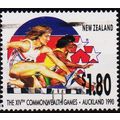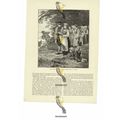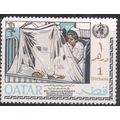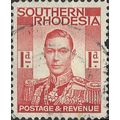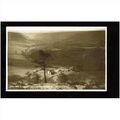Hereford - Bridge & Cathedral - real photo postcard c.1930s
- Condition : Used
- Dispatch : 2 Days
- Brand : None
- ID# : 125000813
- Quantity : 1 item
- Views : 346
- Location : United Kingdom

- Seller : justthebook (+1699)
- Barcode : None
- Start : Fri 28 Feb 2014 10:23:23 (BST)
- Close : Run Until Sold
- Remain : Run Until Sold
More Listings from This Seller view all
Seller's Description
- Postcard
- Picture / Image: Hereford Bridge and Cathedral - real photo type
- Publisher: none given
- Postally used: no
- Stamp: n/a
- Postmark(s): n/a
- Sent to: n/a
- Notes / condition:
Please ask if you need any other information and I will do the best I can to answer.
Image may be low res for illustrative purposes - if you need a higher definition image then please contact me and I may be able to send one.
------------------------------------------------
Postage & Packing:
UK (incl. IOM, CI & BFPO): 99p
Europe: £1.60
Rest of world (inc. USA etc): £2.75
No additional charges for more than one postcard. You can buy as many postcards from me as you like and you will just pay the fee above once. (If buying postcards with other things such as books, please contact or wait for invoice before paying).
Payment Methods:
UK - PayPal, Cheque (from UK bank) or postal order
Outside UK: PayPal ONLY (unless otherwise stated) please. NO non-UK currency checks or money orders (sorry).
NOTE: All postcards are sent in brand new stiffened envelopes which I have bought for the task. These are specially made to protect postcards and you may be able to re-use them. In addition there are other costs to sending so the above charge is not just for the stamp!
I will give a full refund if you are not fully satisfied with the postcard.
----------------------------------------------
Text from the free encyclopedia WIKIPEDIA may appear below to give a little background information (internal links may not work) :
*************
The current Hereford Cathedral, located at Hereford in England, dates from 1079. Its most famous treasure is Mappa Mundi, a mediaeval map of the world dating from the 13th century. The cathedral is a Grade I listed building.[1]
The cathedral is dedicated to two patron saints, namely Saint Mary the Virgin and Saint Ethelbert the King. The latter was beheaded by Offa, King of Mercia in the year 792. Offa had consented to give his daughter to Ethelbert in marriage: why he changed his mind and deprived him of his head historians do not know, although tradition is at no loss to supply him with an adequate motive. The execution, or murder, is said to have taken place at Sutton, four miles (6 km) from Hereford, with Ethelbert's body brought to the site of the modern cathedral by 'a pious monk'. At Ethelbert's tomb miracles were said to have occurred, and in the next century (about 830) Milfrid, a Mercian nobleman, was so moved by the tales of these marvels as to rebuild in stone the little church which stood there, and to dedicate it to the sainted king.
Before this, Hereford had become the seat of a bishopric. It is said to have been the centre of a diocese as early as the 6th century. In the 7th century the cathedral was refounded by Putta, who settled here when driven from Rochester by Æthelred of Mercia. The cathedral of stone, which Milfrid raised, stood for some 200 years, and then, in the reign of Edward the Confessor, it was altered. The new church had only a short life, for it was plundered and burnt in 1056 by a combined force of Welsh and Irish under Gruffydd ap Llywelyn, the Welsh prince; it was not, however, destroyed until its custodians had offered vigorous resistance, in which seven of the canons were killed.
Hereford Cathedral remained in a state of ruin until Robert of Lorraine was consecrated to the see (made Bishop) in 1079 and undertook its reconstruction. His work was carried on, or, more probably, redone, by Bishop Reynelm, who was next but one in the succession, and reorganised the college of secular canons attached to the cathedral. Reynelm died in 1115, and it was only under his third successor, Robert de Betun, who was Bishop from 1131 to 1148, that the church was brought to completion.
Of this Norman church, little has survived but the choir up to the spring of the clerestory, the south transept, the arch between the north transept and the choir aisle, and the nave arcade. Scarcely 50 years after its completion William de Vere, who occupied the see from 1186 to 1199, altered the east end by constructing a retro-choir or processional path and a Lady Chapel; the latter was rebuilt not long afterwards—between the years 1226 and 1246, during the Early English style—with a crypt beneath. Around the middle of the century the clerestory, and probably the vaulting of the choir, were rebuilt, having been damaged by the settling of the central tower. Under Bishop Aquablanca (1240–68), one of Henry III's foreign favourites, the rebuilding of the north transept was begun, being completed later in the same century by Bishop Swinfield, who also built the aisles of the nave and eastern transept.
One of the most notable of the pre-reformation Bishops of Hereford, who left his mark upon the cathedral and the diocese, was Peter of Aigueblanche, also known as Bishop Aquablanca, who rebuilt the north transept. Aquablanca came to England in the train of Eleanor of Provence. He was undoubtedly a man of energy and resource; though he lavished money upon the cathedral and made a handsome bequest to the poor, it cannot be pretended that his qualifications for the office to which Henry III appointed him included piety. He was an unblushing nepotist, nor was he afraid to practise gross fraud when occasion called for it.[citation needed] When Prince Edward came to Hereford to deal with Llywelyn the Great of Gwynedd, the Bishop was away in Ireland on a tithe-collecting expedition, and the dean and canons were also absent. Not long after the Bishop's return, which was probably expedited by the stern rebuke which the King administered, he and all his relatives from Savoy were seized within the cathedral by a party of barons, who deprived him of the money which he had extorted from the Irish
In the first half of the 14th century the rebuilding of the central tower, which is embellished with ball-flower ornaments, was carried out. At about the same time the chapter house and its vestibule were built, then Bishop Trevenant, who presided over the Bishopric from 1389 to 1404, rebuilt the south end and groining of the great transept. Around the middle of the 15th century a tower was added to the western end of the nave, and in the second half of this century Bishops Stanbury and Edmund Audley built three chantries, the former on the north side of the presbytery, the latter on the south side of the Lady Chapel. Bishops Richard Mayew and Booth, who between them ruled the diocese from 1504 to 1535, made the last additions to the cathedral by erecting the north porch, now forming the principal northern entrance. The building of the present edifice therefore extended over a period of 440 years.
Thomas de Cantilupe was the next but one bishop of Hereford after Aquablanca. He had faults not uncommon in men who held high ecclesiastical office in his day, however he was a strenuous administrator of his see, and an unbending champion of its rights. For assaulting some of the episcopal tenants and raiding their cattle, Lord Clifford was condemned to walk barefoot through the cathedral to the high altar, and the bishop himself applied the rod to his back. Bishop Cantilupe also wrung from the Welsh King Llewellyn some manors which he had seized, and Cantilupe;after a successful lawsuit against the Earl of Gloucester to determine the possession of a chase near the Forest of Malvern; dug the dyke which can still be traced on the crest of the Malvern Hills. Excommunicated by Archbishop of Canterbury John Peckham, he went to the papal court in Orvieto to plead his case with the pope. He moved with the court to Montefiascone where, already ill, he died in 1282 before his case was fully resolved. His flesh was buried in the monastery of San Severo outside Orvieto and his heart and bones were brought back to England. His bones were placed in a shrine at Hereford Cathedral where they became a focus of a huge pilgrimage cult. Rome was urged to canonise him, and among the evidences of his saintliness which his admirers appealed to, in addition to the miracles of healing wrought at his shrine, were the facts that he never ceased to wear his hair-shirt, and would never allow even his sister to kiss him. The testimony was regarded as conclusive, and 40 years after his death, in 1320, the bishop's name was added to the roll of saints. His arms were adopted for those of the see.
type=real photographic (rp)
theme=topographical: british
sub-theme=england
county/ country=herefordshire
number of items=single
period=1945 - present
postage condition=unposted
Listing Information
| Listing Type | Gallery Listing |
| Listing ID# | 125000813 |
| Start Time | Fri 28 Feb 2014 10:23:23 (BST) |
| Close Time | Run Until Sold |
| Starting Bid | Fixed Price (no bidding) |
| Item Condition | Used |
| Bids | 0 |
| Views | 346 |
| Dispatch Time | 2 Days |
| Quantity | 1 |
| Location | United Kingdom |
| Auto Extend | No |


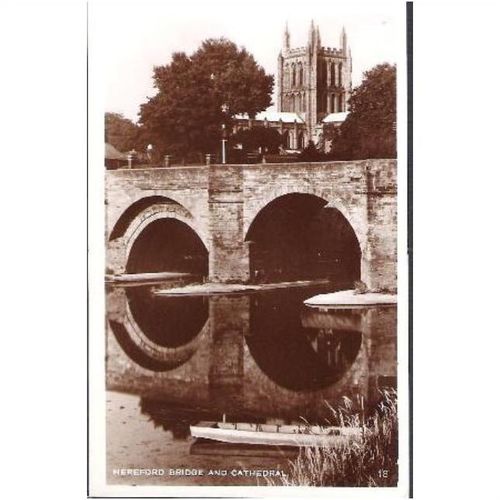

 for 1 item(s)
for 1 item(s)








